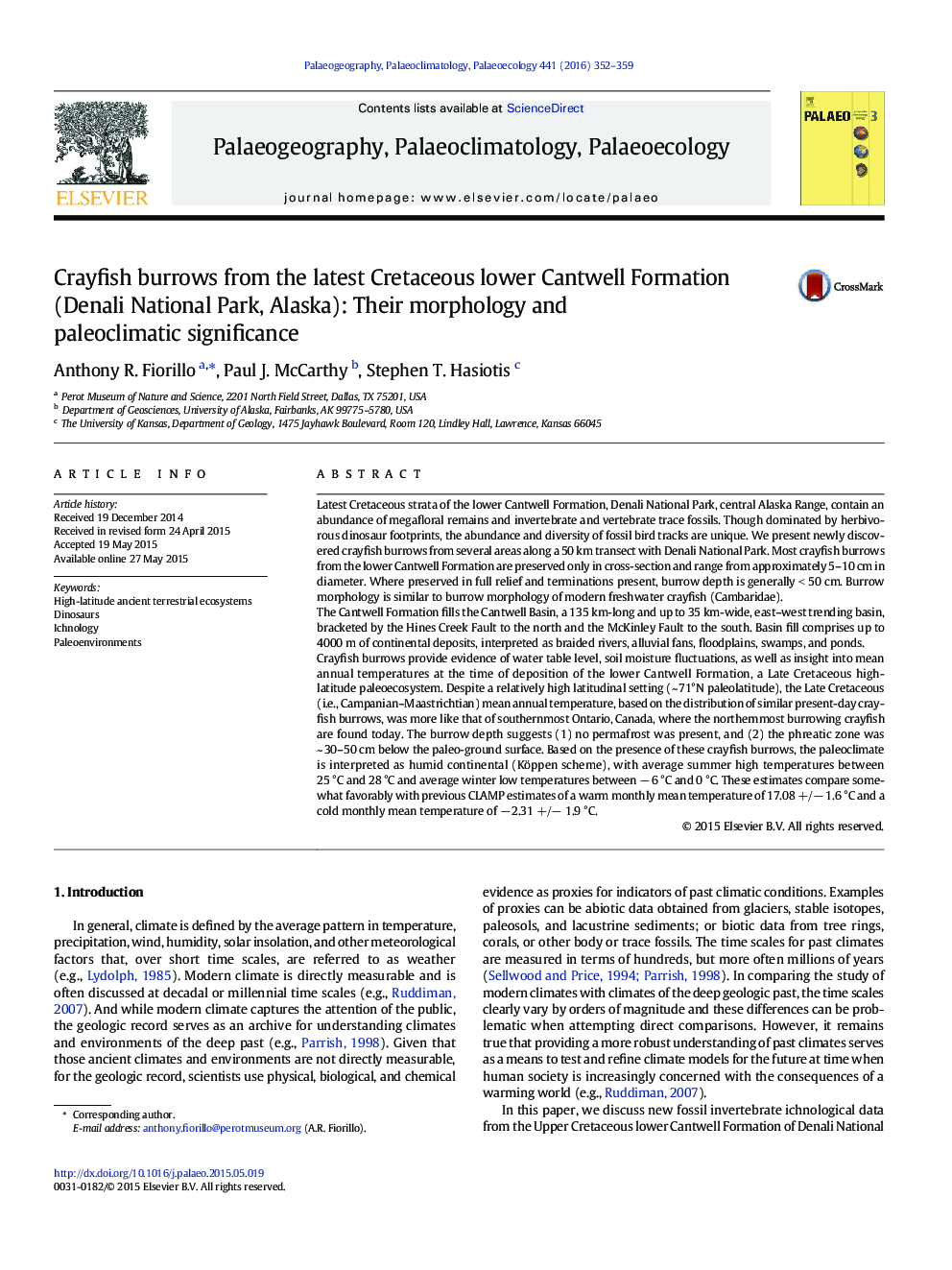| Article ID | Journal | Published Year | Pages | File Type |
|---|---|---|---|---|
| 4465827 | Palaeogeography, Palaeoclimatology, Palaeoecology | 2016 | 8 Pages |
•Fossil crayfish burrows found in Cretaceous of Denali National Park.•Burrows similar to burrow morphology of modern freshwater crayfish.•Cretaceous Denali at a high latitudinal setting (~ 71°N paleolatitude).•Northernmost distribution of modern crayfish is southernmost Canada.•Fossil crayfish burrows indicate Denali was warmer in the Cretaceous.
Latest Cretaceous strata of the lower Cantwell Formation, Denali National Park, central Alaska Range, contain an abundance of megafloral remains and invertebrate and vertebrate trace fossils. Though dominated by herbivorous dinosaur footprints, the abundance and diversity of fossil bird tracks are unique. We present newly discovered crayfish burrows from several areas along a 50 km transect with Denali National Park. Most crayfish burrows from the lower Cantwell Formation are preserved only in cross-section and range from approximately 5–10 cm in diameter. Where preserved in full relief and terminations present, burrow depth is generally < 50 cm. Burrow morphology is similar to burrow morphology of modern freshwater crayfish (Cambaridae).The Cantwell Formation fills the Cantwell Basin, a 135 km-long and up to 35 km-wide, east–west trending basin, bracketed by the Hines Creek Fault to the north and the McKinley Fault to the south. Basin fill comprises up to 4000 m of continental deposits, interpreted as braided rivers, alluvial fans, floodplains, swamps, and ponds.Crayfish burrows provide evidence of water table level, soil moisture fluctuations, as well as insight into mean annual temperatures at the time of deposition of the lower Cantwell Formation, a Late Cretaceous high-latitude paleoecosystem. Despite a relatively high latitudinal setting (~ 71°N paleolatitude), the Late Cretaceous (i.e., Campanian–Maastrichtian) mean annual temperature, based on the distribution of similar present-day crayfish burrows, was more like that of southernmost Ontario, Canada, where the northernmost burrowing crayfish are found today. The burrow depth suggests (1) no permafrost was present, and (2) the phreatic zone was ~ 30–50 cm below the paleo-ground surface. Based on the presence of these crayfish burrows, the paleoclimate is interpreted as humid continental (Köppen scheme), with average summer high temperatures between 25 °C and 28 °C and average winter low temperatures between − 6 °C and 0 °C. These estimates compare somewhat favorably with previous CLAMP estimates of a warm monthly mean temperature of 17.08 +/− 1.6 °C and a cold monthly mean temperature of − 2.31 +/− 1.9 °C.
